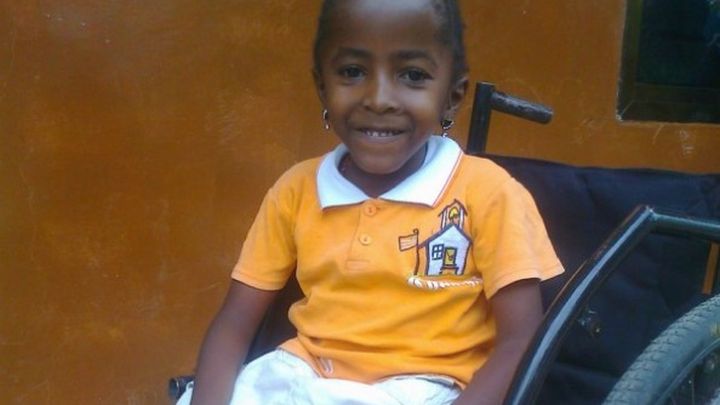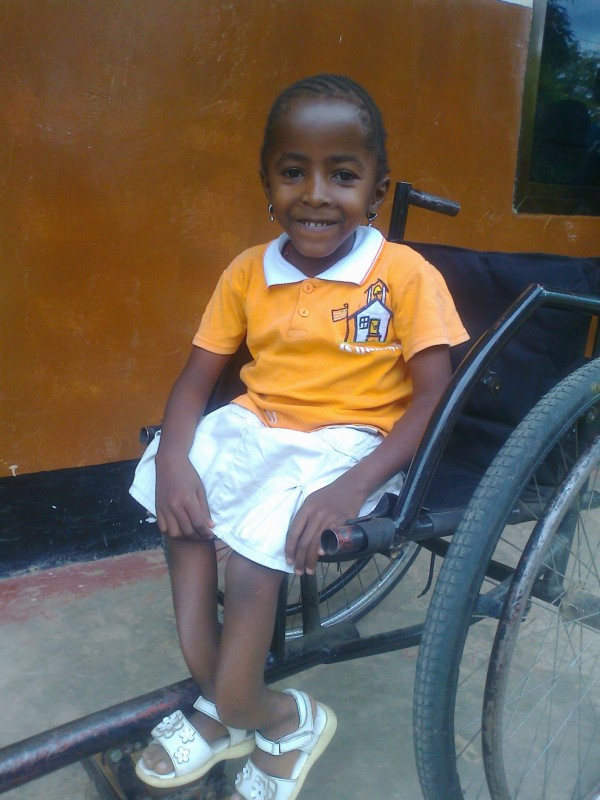
Join Hands Tanzania
Donation protected
Join Hands Tanzania is raising money to begin work in Tanzania! Their aim is help bring expert treatment for two very severe conditions children in Tanzania are suffering from- Osteogenesis Imperfecta and NOMA. To see pictures too graphic for gofundme, go to here

JOIN HANDS TANZANIA is a newly established NGO founded by a group of people from Germany, Austria, Switzerland and Tanzania with the aim to provide
-------awareness and counseling
-------appropriate and professional medical treatment and surgeries
-------provission of medical equippment
-------improving services
-------aftercare
-------schooling
-------training
for children and adults affected by osteo genesis imperfecta (commonly known as brittle bones ) as well as for children suffering of NOMA ( cancrum oris ).
Our vision will be to build and run a dispensary tailored for OI and NOMA affected children, as well as a boading school serving all OI affected children from East Africa as well as NOMA children from Tanzania. These children have no other means to get proper schooling and training because of their condition. Receiving adequate and good schooling and training will enable these children to have a better life and a better and brighter future. It will be our goal to see these children one day as self-sufficient, confident and equal members of their communities. Lets JOIN HANDS here!
NOMA (cancrum oris) is an acute and ravaging gangrenous infection affecting the face. The victims of NOMA are mainly children under the age of 6, caught in a vicious circle of extreme poverty and chronic malnutrition, who suffer unimaginable pain, discomfort and social exclusion from their communities.
NOMA is an opportunistic infection that begins with an ulcer in the mouth that is promoted by extreme poverty.
If the condition is detected in the early stage, progression can be prevented with the use of mild antibiotics and immediate nutritional rehabilitation. If left untreated, as happens in most cases, the ulcer progresses to NOMA at an alarming pace. The next stage is extremely painful when the cheeks or lips begin to swell and the victim's general condition deteriorates. Within a few days, the swelling increases, a blackish furrow appears and the gangrenous process sets in. After the scrab falls away, a gaping hole is left in te face. It is estimated that the mortality rate reaches up to an alarming 90%.
The world health organisation (WHO) estimates 140.000 new cases of NOMA every year.
NOMA exists predominantely in remote, rural areas and is usually considered a curse. Villages and hamlets have little, if any, access to doctors or hospitals and so the parents of NOMA victims will in most cases consult traditional healers, whose unconventional healing methods often make conditions worse or even bring about an accelerated death. In many cases, villages are located 3 - 4 hours walk from the main roads and, even then, the parents or guardians of NOMA victims do not have the bus fare to go to a hospital. Hospitals and rural clinics have neither the drugs (antibiotics) to treat the bacterial infection nor the clinical expertise or surgical instruments to treat the facial deformities. This means that the survivors of the gangrenous infection will spend the rest of their lives with these facial disfigurements, pain, discomfort and rejection by their communities.
Those who are fortunate enough to be referred to a larger urban hospital are still unlikely to receive adequate clinical help let alone reconstructive surgery.
So, it is for this reason that we would like to JOIN HANDS in working together with visiting teams of reconstructive surgeons in providing their skills, the equipment, instruments and drugs to give NOMA victims a chance
-------OF A NEW FACE
-------A NEW LIFE
-------RENEWED HOPE
The WHO has reported that NOMA may be on the increase in various African countries.
OSTEO GENESIS IMPERFECTA --OI-- (brittle bones)
Osteo Genesis Imperfecta (OI) is a genetic disorder characterized by bones that break easily, often from little or no apparent cause. A classification system of different types of OI is commonly used to help describe how severely a person with OI is affected.
OI is caused by genetic defects that affect the body's ability to make strong bones. In dominant (classical) OI, a person has too little type I collagen or a poor quality of type I collagen due to a mutation in one of type I collagen genes. Collagen is the major protein of the body"s connective tissue. It is part of the framework that bones are formed around. In recessive OI, mutations in other genes interfere with collagen production. The result in all cases is fragile bones that break easily.
The characteristic features of OI vary greatly from person to person, even among people with the same type of OI, and even within the same family.
Following types of OI are known- Type I, II, III, IV, V, VI, VII, VIII
Inheritance factors Most cases of OI (85 - 90%) are caused by a dominant genetic defect. This means that only one copy of the mutation carrying gene is necessary for the child to have OI. Children who have the dominant form of OI have either inherited it from a parent or, when the parent does not have OI, as a spontaneous mutation.
Treatment There is not yet a cure for OI. Treatment is directed toward preventing or controlling the symtoms, maximizing independent mobility, developing optimal bone mass and muscle strength. As well, physicians care for fractures, use extensive surgical and dental procedures and physical therapy.
Children and adults with OI will also benefit from maintaining a healthy weight, eating a nutritious diet.
To have a disabled child or to be a disabled person in Africa is still seen as a curse in many areas and people in rural areas like to hide them or consult a traditional healer with no good results towards a adequate treatment.
It would be wishful thinking to get adequate and professional treatment in rural areas. As well we have to be aware of the fact that most children and adults affected by OI are in rural areas, far away from the next hospital or even healthpost. In addition, in remote areas there would be no chance of even identifying OI and in most cases, little means to get onto a bus or any transportation to the next bigger town.
So, it is for this reason that we would like to JOIN HANDS here and try to improve as much as possible treatment as well as awareness and aftercare of people affected by OI. To improve their lifestyle and give them a good education, because education is their only "key" to manage their lives as selfsufficient and selfconfident respected members of their communities.
WHY TANZANIA....
Tanzania is one of the largest countries of Sub-saharan Africa and shares many of the problems of underdevelopment so often associated with this region. It is one of the poorest countries in the world, ranked 162th of 177 countries in the human development index (2006). There is evidence of poverty in many aspects of everyday life: around thirteen million Tanzanians live on less than a dollar a day, 38% of children are malnourished and the mortality rate for infants is 112 per 1.000, 40% of the population have no access to clean water.
At the same time, however, Tanzania has also built a strong economic record and today boasts a growth rate of more than 5%, coupled with a low single-digit inflation rate.
Moreover, the country has been stable and peaceful for many years, since independence, which has added to the positive reputation it enjoys among African countries and development partners and donors.
------------------------------
Planned activities 2013 - 2015
-Set up JOIN HANDS TANZANIA according to all required laws, etc. in Tanzania
-Identify children and adults affected by OI in Dar es Salaam and within Tanzania
-Identify children affected by NOMA in Dar es Salaam and within Tanzania
-Run awareness programs in Dar es Salaam and throughout Tanzania on OI and NOMA
-Get children and adults affected by OI to the partner hospital for adequate and professional treatment, surgeries and physio therapies
-Get all missing equipment for treatment and surgeries of OI affected patients to Tanzania in order to get professional help for them
-To set appointments and finalize the logistics for visiting medical teams from Europe to do surgeries on NOMA affected children
-Have the surgeries of NOMA affected children carried out through the visiting teams
-Set up international meetings and further training for Tanzanian medical staff involved in OI with our international partners of OI Foundation Germany, etc.
-Set up international meetings and further training for tanzanian med. stuff involved in NOMA with intern.partners
-Set up of a pool of medical equipment such as wheelchairs, walkers etc. for OI affected patients
-Start building dispensary / hospital
-Start building school
-Facilitated adequate aftercare for OI and NOMA affected patients
-----------
Organizer
David Rosser
Organizer
Seattle, WA